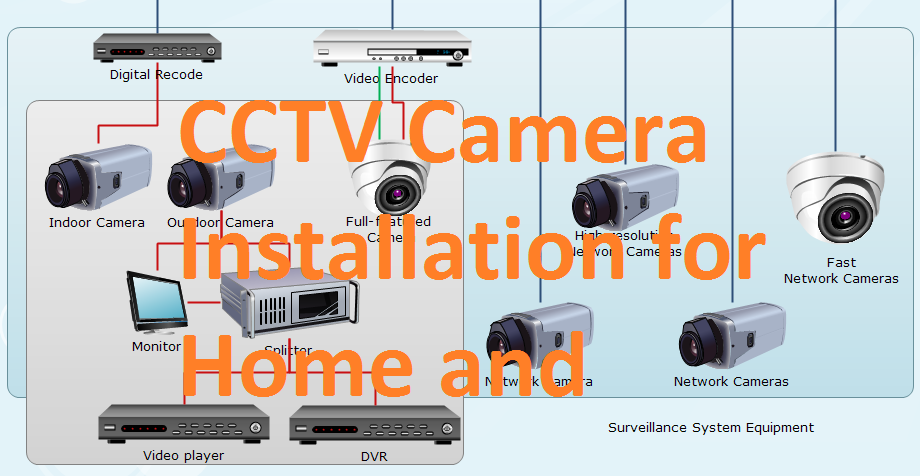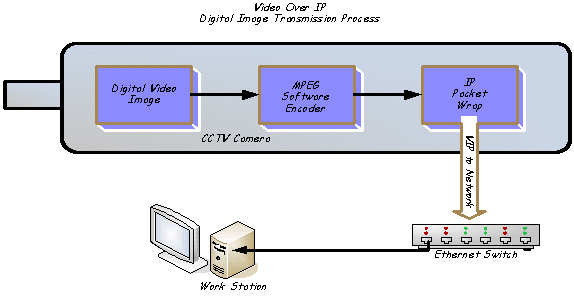Exactly How CCTV Cameras With Fiber Optic Output Enhance Long-Distance Surveillance
CCTV video cameras equipped with fiber optic result represent a significant innovation in long-distance monitoring technology, using exceptional advantages over standard systems. By leveraging the homes of light transmission through fiber optics, these electronic cameras guarantee high-def video top quality stays undamaged across considerable distances while properly reducing electro-magnetic interference - cctv fibre optic cable.

Recognizing Fiber Optic Innovation
Fiber optic technology is significantly used in long-distance tracking applications due to its extraordinary capacity for information transmission. This innovation employs slim strands of glass or plastic fibers to send data as light signals, significantly lowering the attenuation commonly related to conventional copper cables. The intrinsic homes of optical fiber enable the transmission of large volumes of information over significant ranges without loss of high quality, making it an excellent option for applications calling for reputable interaction.
The principle of complete internal representation facilitates the effective transmission of light within the fiber, making certain high data transfer and rate. Unlike electrical signals in steel wires, fiber optics are unsusceptible to electro-magnetic interference, improving the honesty of data transmission. This particular is specifically useful in environments with high levels of electric sound, such as commercial settings or metropolitan locations.
Additionally, fiber optic cords are lighter and much more adaptable than their copper equivalents, which simplifies installation and minimizes architectural lots. With their resilience and resistance to ecological variables, optical fiber are well-suited for outdoor applications, thus prolonging the reach of checking systems. As a result, fiber optic technology is ending up being a foundation in modern-day security remedies, effectively addressing the challenges of long-distance surveillance.
Benefits of Fiber Optic CCTV
Utilizing fiber optic innovation in CCTV systems uses many benefits that boost security capacities. Among the key advantages is the capacity to send high-def video clip over cross countries without significant signal degradation. Unlike conventional copper cable televisions, fiber optics can maintain video clip top quality over considerable runs, making them excellent for huge properties or remote monitoring areas.
In addition, fiber optic cords are much less prone to electromagnetic interference, which can misshape signals in standard systems. This makes sure clearer photos and nonstop service, crucial for security surveillance. In addition, fiber optics are inherently extra safe, as intercepting signals calls for specific equipment, hence supplying an extra layer of defense against unapproved gain access to.
The light-weight and small nature of fiber optic wires likewise streamlines setup, making it possible for simpler transmitting through limited spaces and lowering overall labor expenses. Their resilience makes them immune to environmental elements such as dampness and temperature variations, extending the life expectancy of the surveillance system.
Finally, fiber optic systems can sustain a majority of cams on a solitary network, optimizing resources and supplying scalability for future expansion. These benefits make fiber optic CCTV systems a premium choice for contemporary monitoring demands.
Comparison With Conventional Equipments
When contrasting CCTV systems, traditional configurations commonly fall short in a number of vital locations, particularly in terms of distance and signal stability. Standard coaxial wire systems generally deal with considerable signal destruction over fars away, restricting reliable monitoring ranges to roughly 300 feet (cctv fibre optic cable). Yet threshold, picture clearness reduces, causing possible blind places and lowered security performance
In contrast, fiber optic systems keep signal stability over much higher distances, commonly surpassing numerous miles without loss of quality. This is greatly because of their ability to transfer information as light signals, which are less prone to electro-magnetic interference than electric signals used in standard systems.
In addition, conventional systems call for more substantial upkeep and troubleshooting because of their vulnerability to environmental factors such as dampness and electro-magnetic noise. Fiber optic systems, conversely, offer enhanced durability and reduced maintenance prices, as they are less susceptible to damages.
Applications in Long-Distance Tracking
The benefits of modern CCTV systems in preserving signal stability over cross countries open a wide variety of applications for long-distance surveillance. One significant application is in metropolitan monitoring, where communities release fiber optic CCTV systems to check public spaces, improving safety and security and deterring criminal task. These systems supply continuous, high-grade video clip feeds that are essential for reliable police and emergency action.
Another crucial application is in commercial settings, where remote tracking of manufacturing procedures and hazardous locations is essential. Fiber optic CCTV can hold up against harsh settings and transmit information over cross countries without loss of high quality, allowing for real-time oversight and lessening risks to workers.
In addition, crucial facilities such as airport terminals, railways, and pipelines take advantage of long-distance CCTV surveillance. Security teams can look after large areas from centralized control spaces, making sure quick feedback to any occurrences.
In addition, in farming setups, farmers utilize long-distance CCTV to keep track of plants and animals, aiding to enhance productivity and protection. In general, the adaptability and dependability of fiber optic CCTV systems make them crucial throughout numerous markets, allowing detailed monitoring services tailored to particular needs.
Future Trends in Security Modern Technology
Exactly how will improvements in innovation reshape the landscape of surveillance? The future of security modern technology is positioned for considerable change, driven by innovations such as expert system (AI), artificial intelligence, and side computer. These technologies allow real-time information analysis, permitting quick recognition of possible risks and enhanced situational recognition.
AI-powered analytics will improve the precision of facial acknowledgment systems, minimizing false positives and making it possible for a lot more efficient monitoring of individuals. Furthermore, the combination of Internet of Points (IoT) devices will certainly help with a smooth network of interconnected monitoring systems, enhancing tracking capabilities throughout vast locations.
Another pattern is the shift towards cloud-based storage space solutions, which use scalable information management and accessibility. This will enable companies to store huge quantities of video information without the constraints of physical storage, while making sure that details is easily retrievable.

Final Thought
In conclusion, CCTV cameras geared up with fiber optic output represent a significant development in long-distance tracking capabilities. As surveillance technology continues to evolve, the adoption of fiber optic services will likely play a critical role in enhancing security throughout varied applications.
Comments on “Top Benefits of Installing a Fiber Optic Security Camera for Your Home”